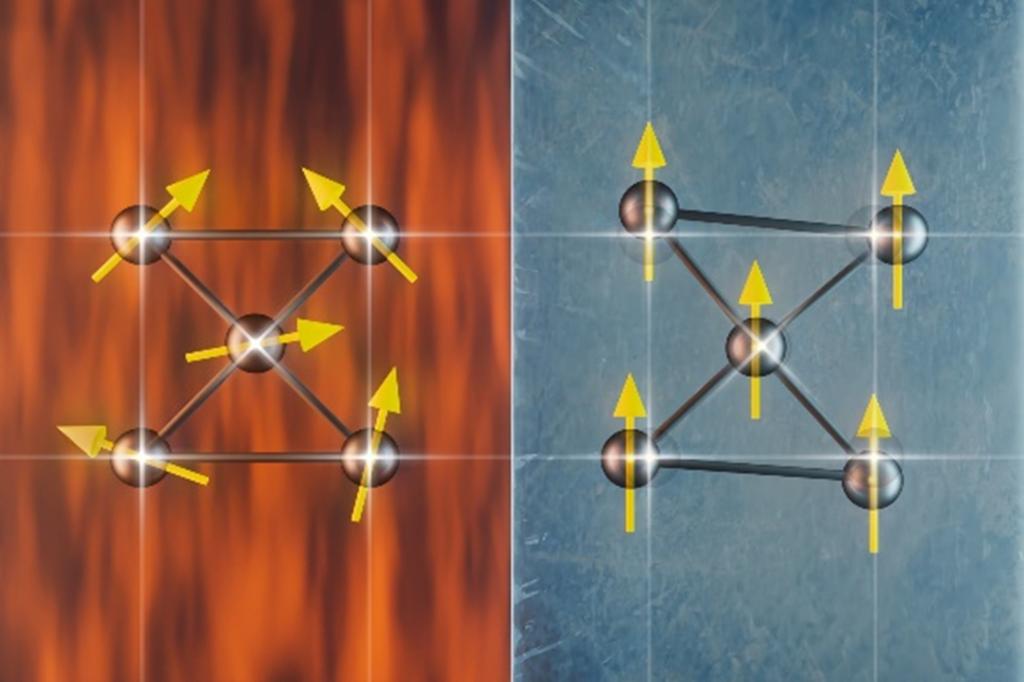
The first materials scientists might have been early humans who - through trial-and-error experiments - discovered the first "cutting-edge" technologies. They found that the best arrowheads and other tools could be made from certain types of natural, structural materials, which at the time included stones and animal bones.
Today, many of the most promising new materials are "functionalized," meaning they are often carefully and methodically designed and synthesized at the atomic scale.
At Oak Ridge National Laboratory, a group of scientists used neutron scattering techniques to investigate a relatively new functional material called a Weyl semimetal. This crystalline material hosts low-energy quasiparticles, which are atomic-scale properties treated as a particle. These Weyl fermions move very quickly in a material and can carry electrical charge at room temperature. Scientists think that Weyl semimetals, if used in future electronics, could allow electricity to flow more efficiently and enable more energy-efficient computers and other electronic devices.
The ORNL team studied a cobalt-based magnetic Weyl semimetal having a particular crystalline structure - a Kagome lattice - that can spontaneously transition into a magnet under certain conditions. Such ferromagnetic materials typically have their atomic spins aligned in the same direction, a property known as magnetic symmetry.
"Our experiments revealed that, when this semimetal reaches the point where it transitions into a magnet, the magnetic symmetry changes or breaks. This is accompanied with simultaneous changes in atomic positions in localized areas compared to the overall, average symmetry of the material," said Qiang Zhang, a neutron scientist at ORNL's Spallation Neutron Source, or SNS, and corresponding author who initiated the study. "Discovering the existence of local symmetry breaking in a Weyl semimetal is crucial to understanding the magnetic and quantum properties of this and other functional materials."
Determining the structural complexity of the semimetal's crystalline structure involved conducting experiments on the crystal samples at multiple neutron instruments at ORNL. At the SNS, the HYSPEC hybrid spectrometer was used to measure the magnetic order in the crystals and the POWGEN powder diffractometer was used to determine the atoms' arrangement and the effect of temperature on the sample. Using the PTAX triple-axis polarized neutron spectrometer at ORNL's High Flux Isotope Reactor, or HFIR, the team obtained more sensitive observations of the spin arrangements of samples.
"The neutron scattering experiments, together with our data modeling technique, could provide us with the idea about how atoms are arranged and how they interact with each other," said ORNL's Yuanpeng Zhang, a corresponding author and specialist in developing software tools for neutron scattering data reduction and analysis. "Our reported results on the Weyl semimetal system and many other reports from structural studies with neutrons have confirmed that local symmetry breaking plays an important role in determining the properties of a wide range of functional materials, such as in energy storage applications and magnetic systems."
The scientists expect that future research on these materials will lead to methods of controlling localized magnetic symmetry in Weyl semimetals to alter the material's desired physical properties for use in engineered magnetic devices.
The team included researchers from the Neutron Scattering Division, the Materials Science and Technology Division and the Shull Wollan Center at ORNL. The result is another significant finding from a study led by Qiang Zhang, following a previous report on unusual couplings between spins in the material.
SNS and HFIR are Department of Energy Office of Science user facilities.
UT-Battelle manages ORNL for DOE's Office of Science, the single largest supporter of basic research in the physical sciences in the United States. The Office of Science is working to address some of the most pressing challenges of our time. For more information, please visit energy.gov/science.






